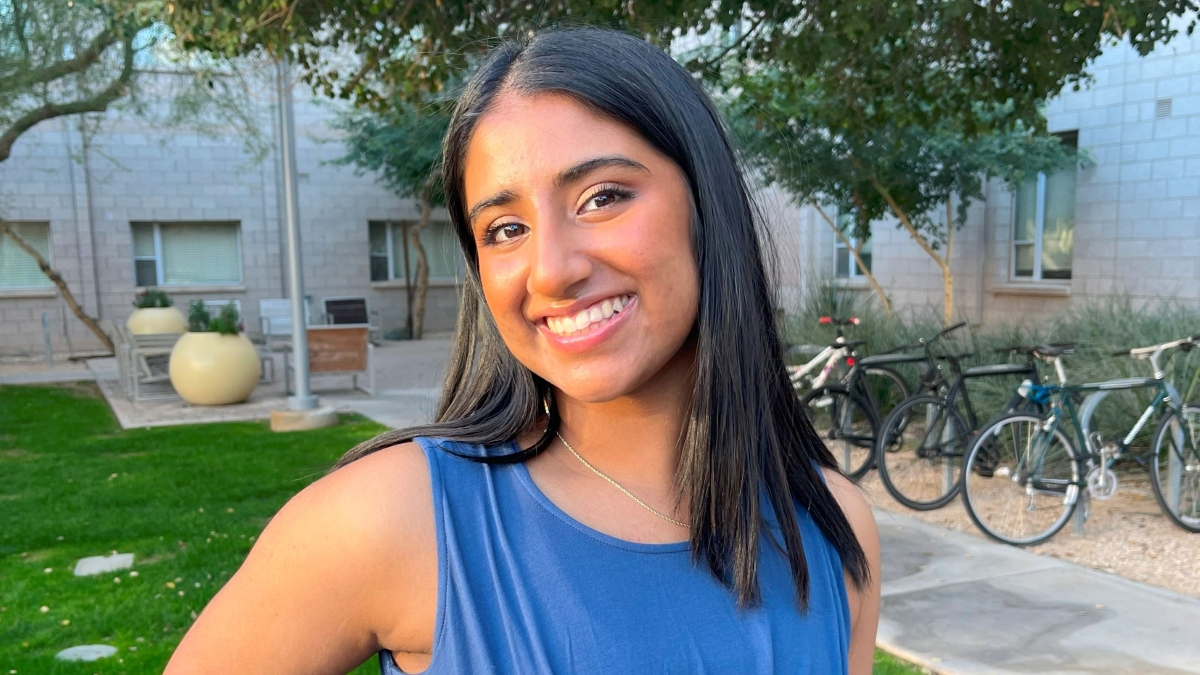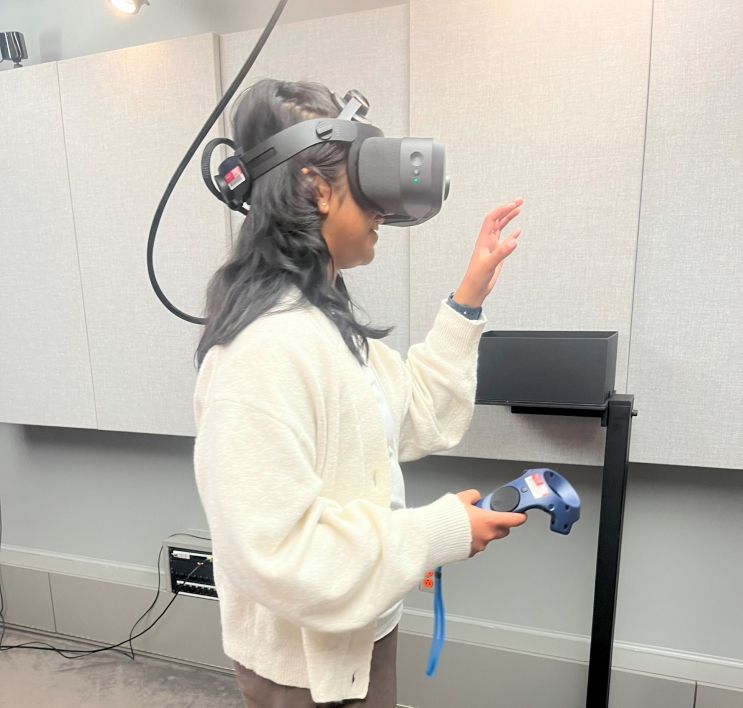ASU honors student combines music, augmented reality in prestigious research program

Movinya Gunatilaka, a junior computer systems engineering major, participated in the Fulbright-MITACS Globalink Research internship program in Canada this summer. Photo courtesy Movinya Gunatilaka
Movinya Gunatilaka, a junior computer systems engineering major in Barrett, The Honors College at Arizona State University, combined a love of music with an interest in augmented reality for her work in a prestigious research program this summer.
She was a participant in the Fulbright-MITACS Globalink Research Internship program at McGill University in Montreal, Quebec, Canada. The program, sponsored by Fulbright Canada, ran from May through August.
The program brings students to Canada to participate in advanced university research projects in many disciplines — ranging from science, engineering and math to the humanities and social science — at 70 different universities throughout the country.
Projects, which are supervised by university faculty, cover a broad cross section of research topics and academic disciplines.
In addition to research, the program includes grant funding, professional training and cultural, social and recreational activities. Gunatilaka received grants totaling $6,530.
Nilanjana Bhattacharjya, Honors Faculty Fellow at Barrett and a faculty mentor in the Office of National Scholarships Advisement at ASU, said the Fulbright-MITACS Globalink Research Internship program is very competitive, with applicants from around the world.
“Students are competing against other highly qualified undergraduates in their fields, so to be selected is quite an achievement,” she said.
Bhattacharjya said Gunatilaka’s previous research experience helped put her among the top candidates for the MITACS program.
Gunatilaka worked at the Centre for Interdisciplinary Research in Music, Media and Technology at McGill in the Shared Reality Lab of the Musical Telepresence Project.
The project focused on creating musical immersion with augmented reality and entailed integrating video of one or more remote performers from a camera array into a musician’s AR headset display. The goal was to enable musicians in different locales to freely move, perceive each other from the appropriate perspective and interact naturally, resulting in a lifelike musical experience.
“Music is actually a huge part of my life and I grew up playing several instruments. I was highly involved in (high school) marching band, so I wanted to do this project because my background in music made me feel more connected to it,” said Gunatilaka, who played guitar and piano as a youngster and took up the trumpet in middle school.
“The goal of the research is to be able to have physically separated musicians play their instruments with one another through AR so they feel as if they’re playing next to each other,” she explained.
Gunatilaka said it was challenging figuring out how to work with view synthesis software across multiple cameras and stream in real time to an augmented reality space.
Movinya Gunatilaka using an AR headset.
She said she was particularly interested in working in the Shared Reality Lab to get more hands-on research experience and because of the lab’s interesting projects, including one using a CHROME extension called IMAGE that describes graphics with machine learning and sounds to make the internet more accessible to people who are blind.
“There were a lot of very cool projects in this lab,” she said.
The Fulbright-MITACS Globalink Research program was not Gunatilaka’s first research experience. During the summer of 2022, she was a research intern on the Moving Well Being Well project at Dublin City University through ASU’s International Research Experience for Students program funded by the National Science Foundation and headed by Professor Andreas Spanias.
The Moving Well Being Well project is based on a national physical literacy study done in 2017 on primary school children across Ireland. The data collected ranged from health metrics like maximal oxygen uptake (VO2 max), an important indicator of cardiorespiratory fitness, to proficiency scores of fundamental movement skills.
The purpose of this research was to address compromised and inaccurate VO2 max estimations taken by beep tests and shuttle runs, and encourage children to have more active lifestyles. Gunatilaka used machine learning models for feature prediction and classification of children's maximal oxygen uptake levels.
Gunatilaka said she appreciated the lab work she did this year and last, which has helped her hone in on future plans.
“Now, as I do more of these research experiences, I’m finding out what I like and don’t like. Last year I worked more on the data side, and this year I worked on the hardware side. This is going to help me prepare for my future after my undergraduate degree,” she said.
“I know now that I would like to pursue a master’s in computer engineering, and MITACS has programs and a lot of connections to help obtain scholarships to attend graduate school.”
More Arts, humanities and education

ASU professor, alum named Yamaha '40 Under 40' outstanding music educators
A music career conference that connects college students with such industry leaders as Timbaland. A K–12 program that…

ASU's Poitier Film School to host master classes, screening series with visionary filmmakers
Rodrigo Reyes, the acclaimed Mexican American filmmaker and Guggenheim Fellow whose 2022 documentary “Sansón and Me” won the Best…

Pen Project helps unlock writing talent for incarcerated writers
It’s a typical Monday afternoon and Lance Graham is on his way to the Arizona State Prison in Goodyear.It’s a familiar scene.…


